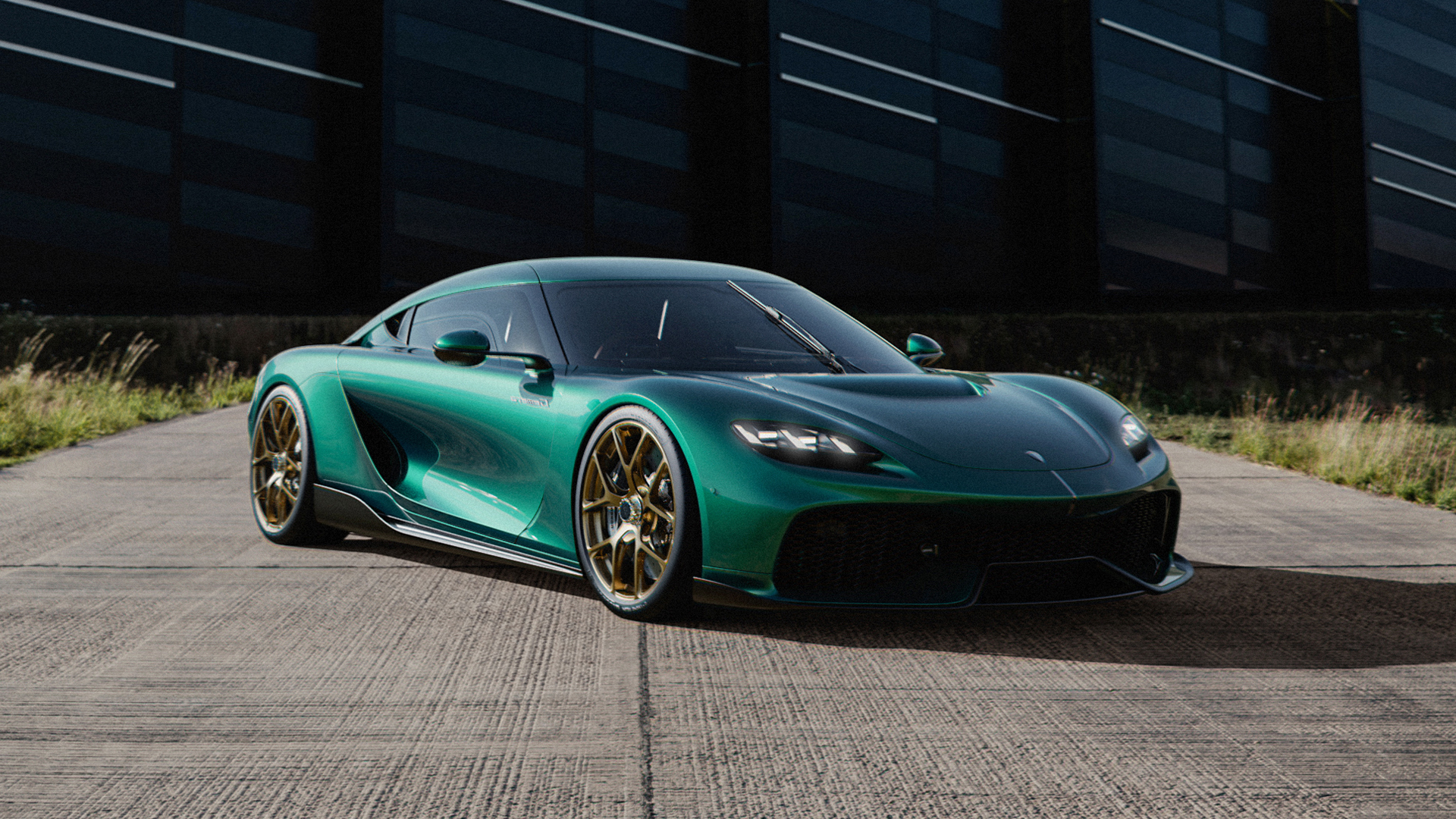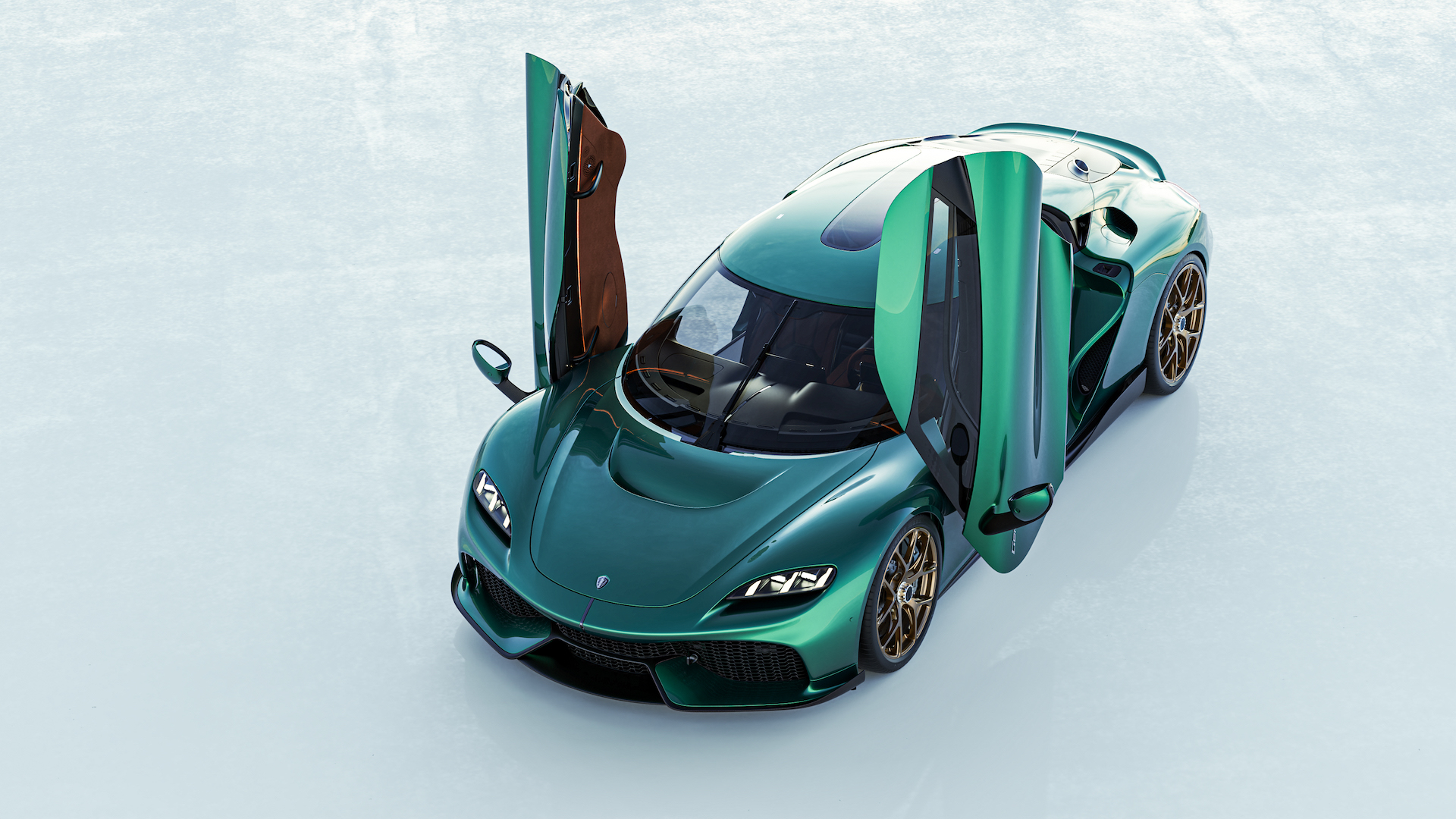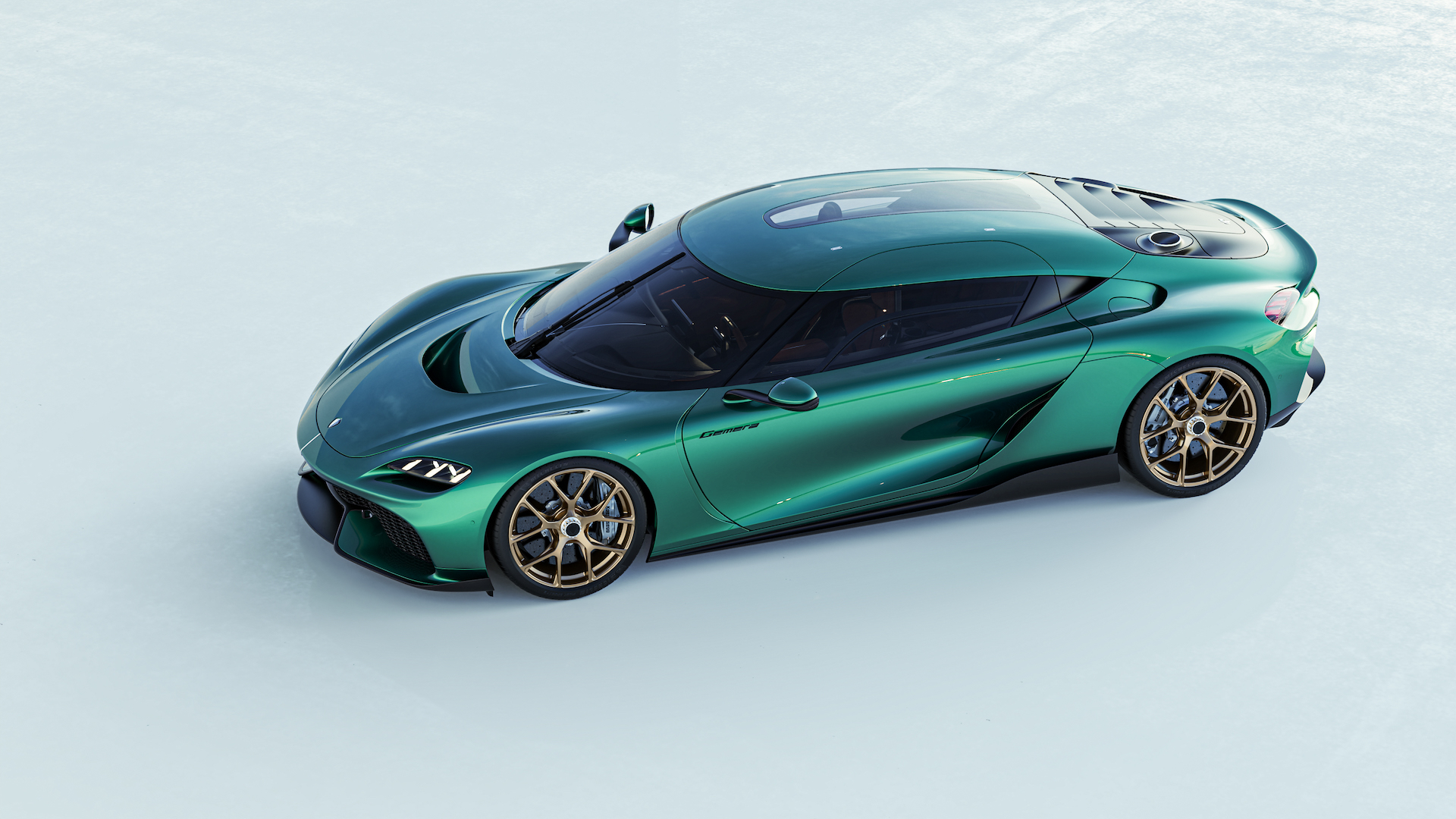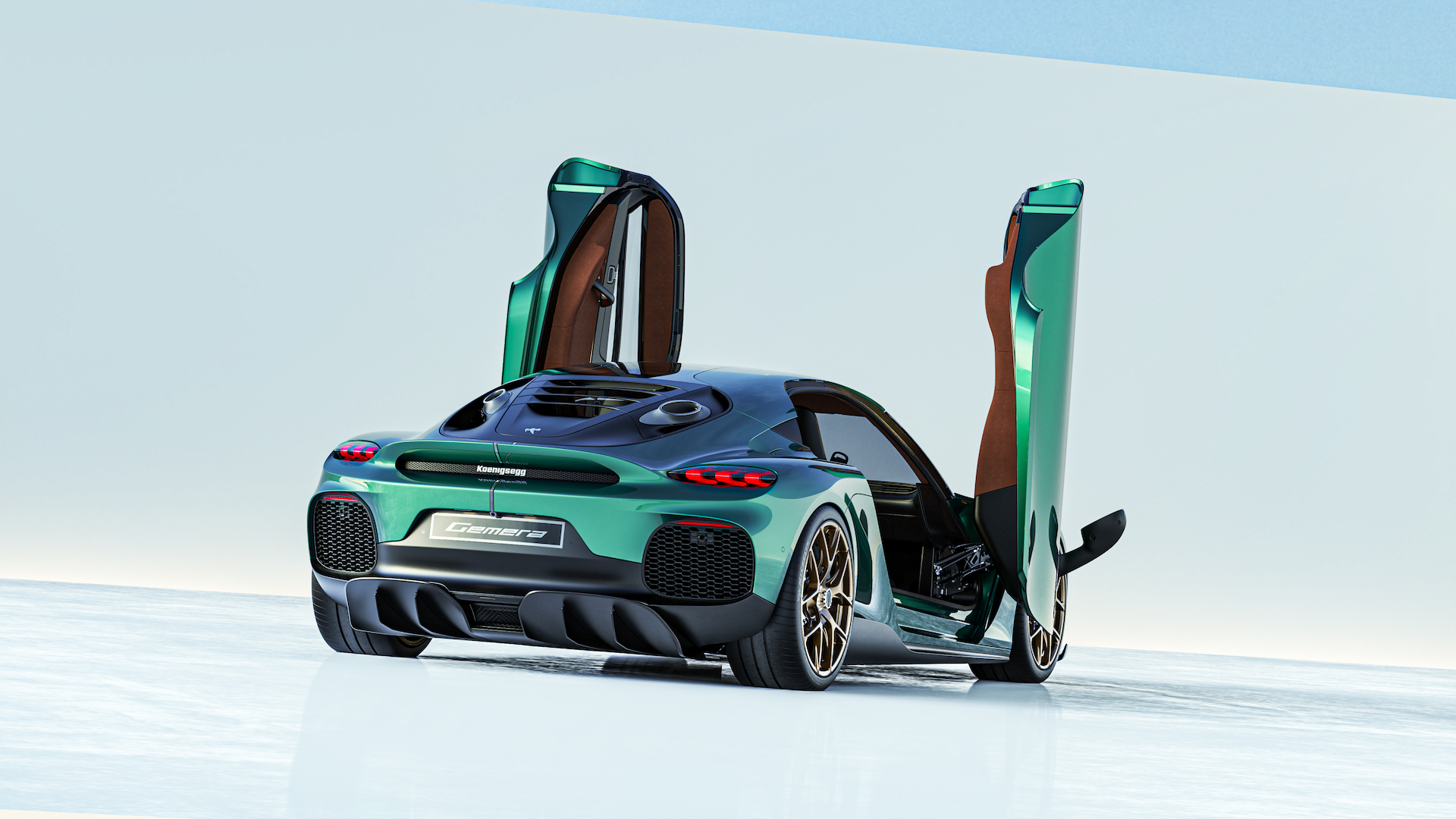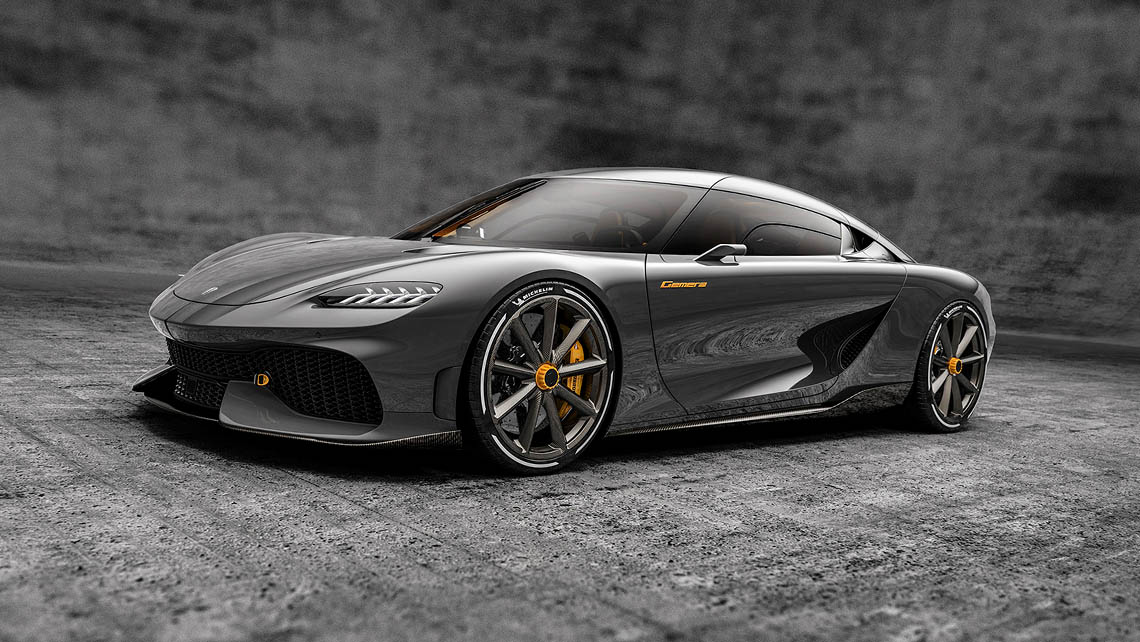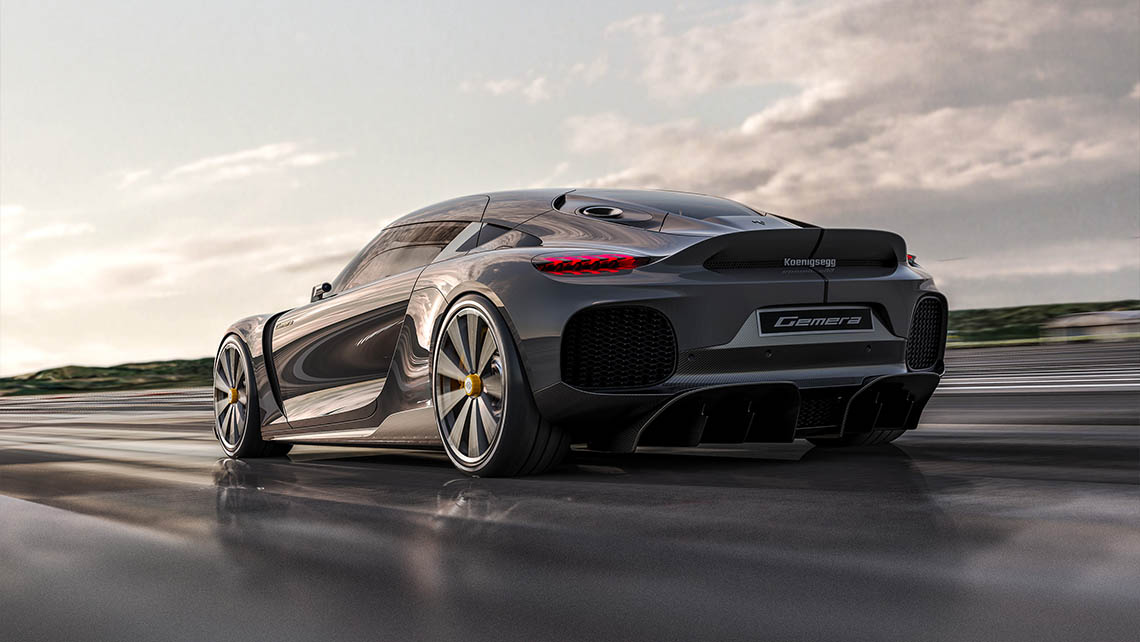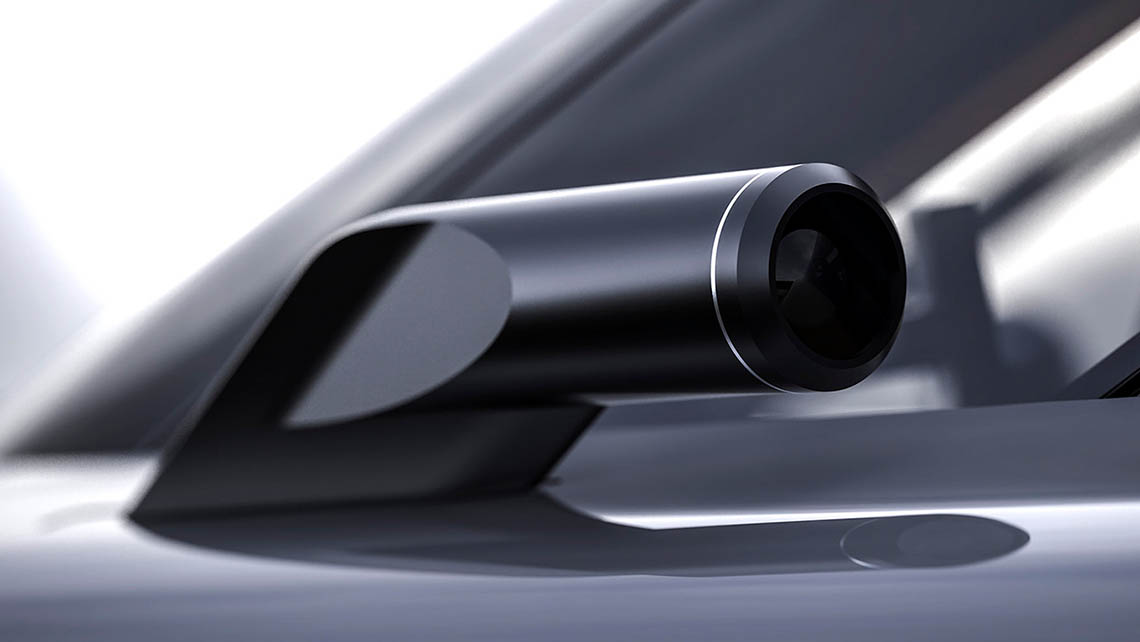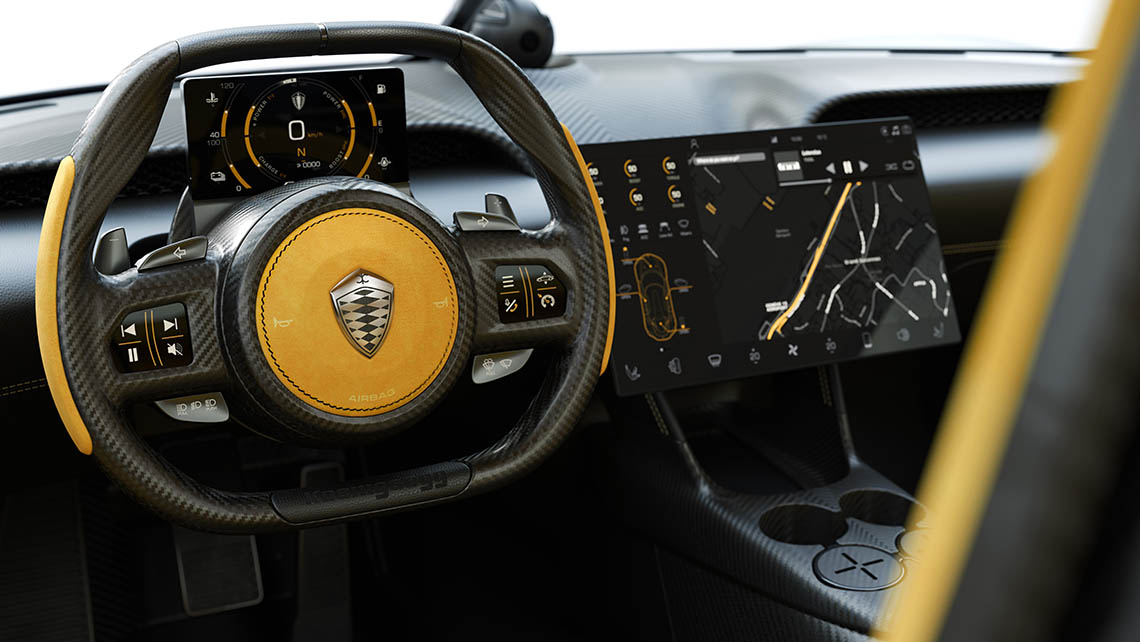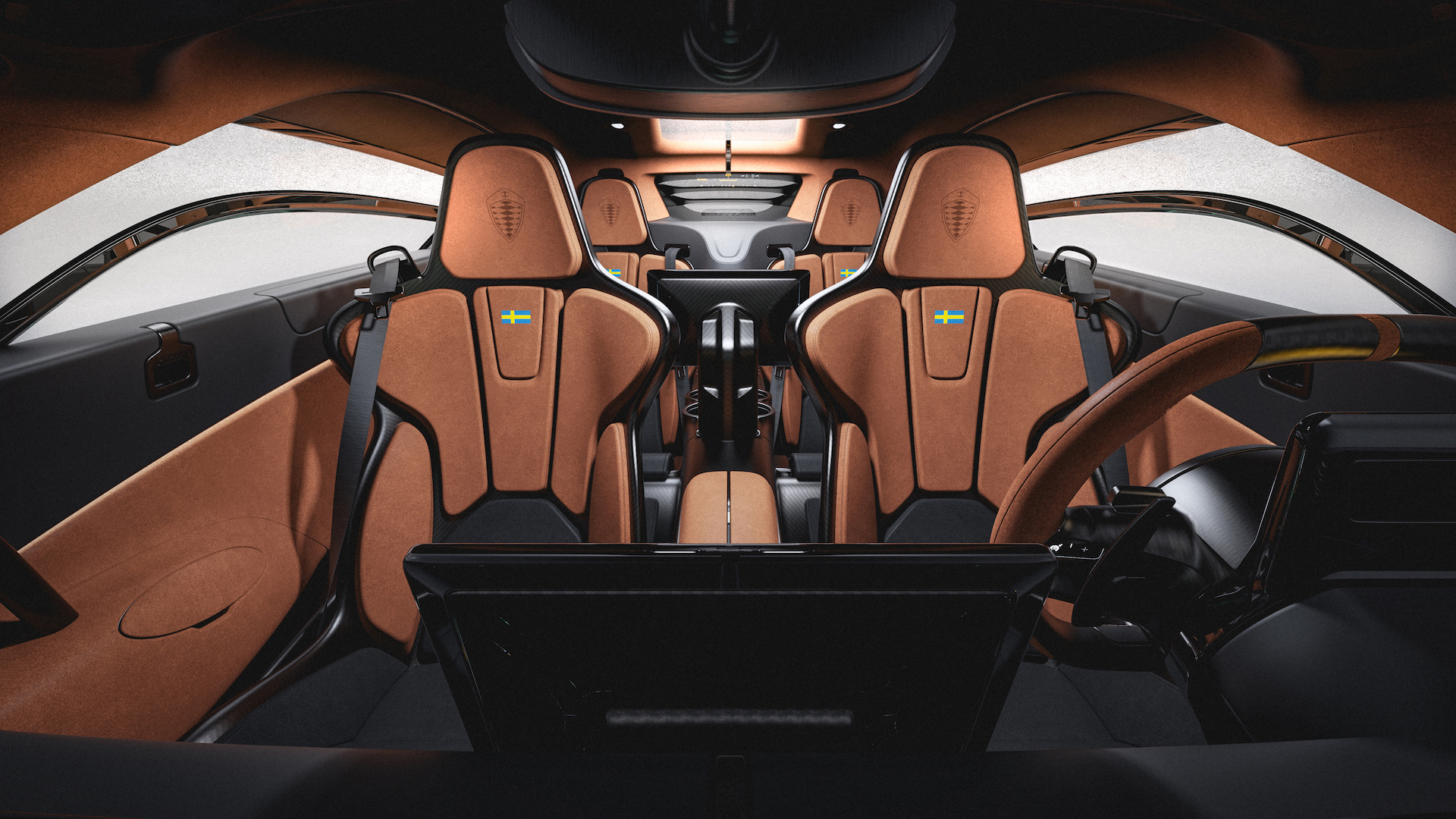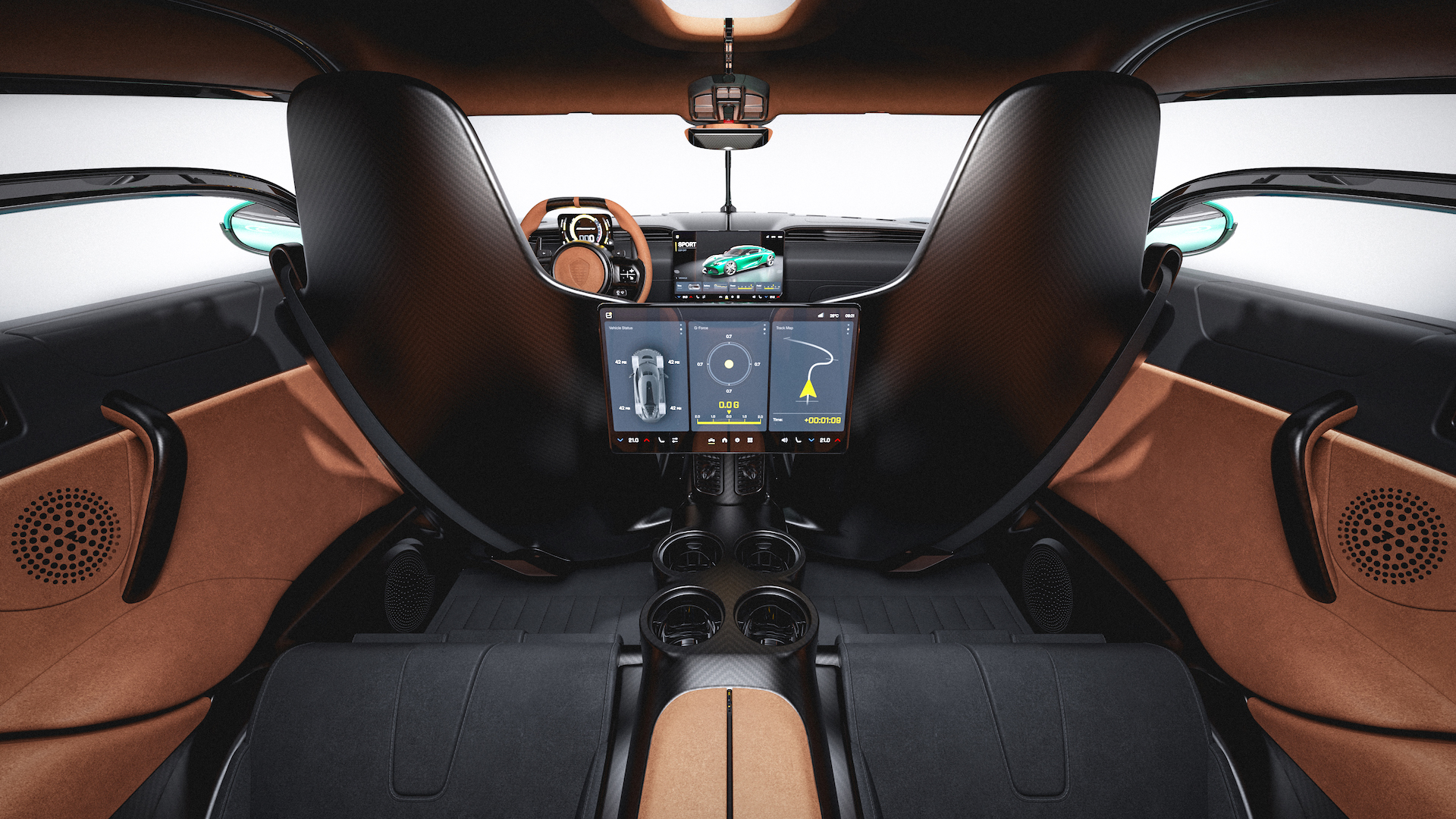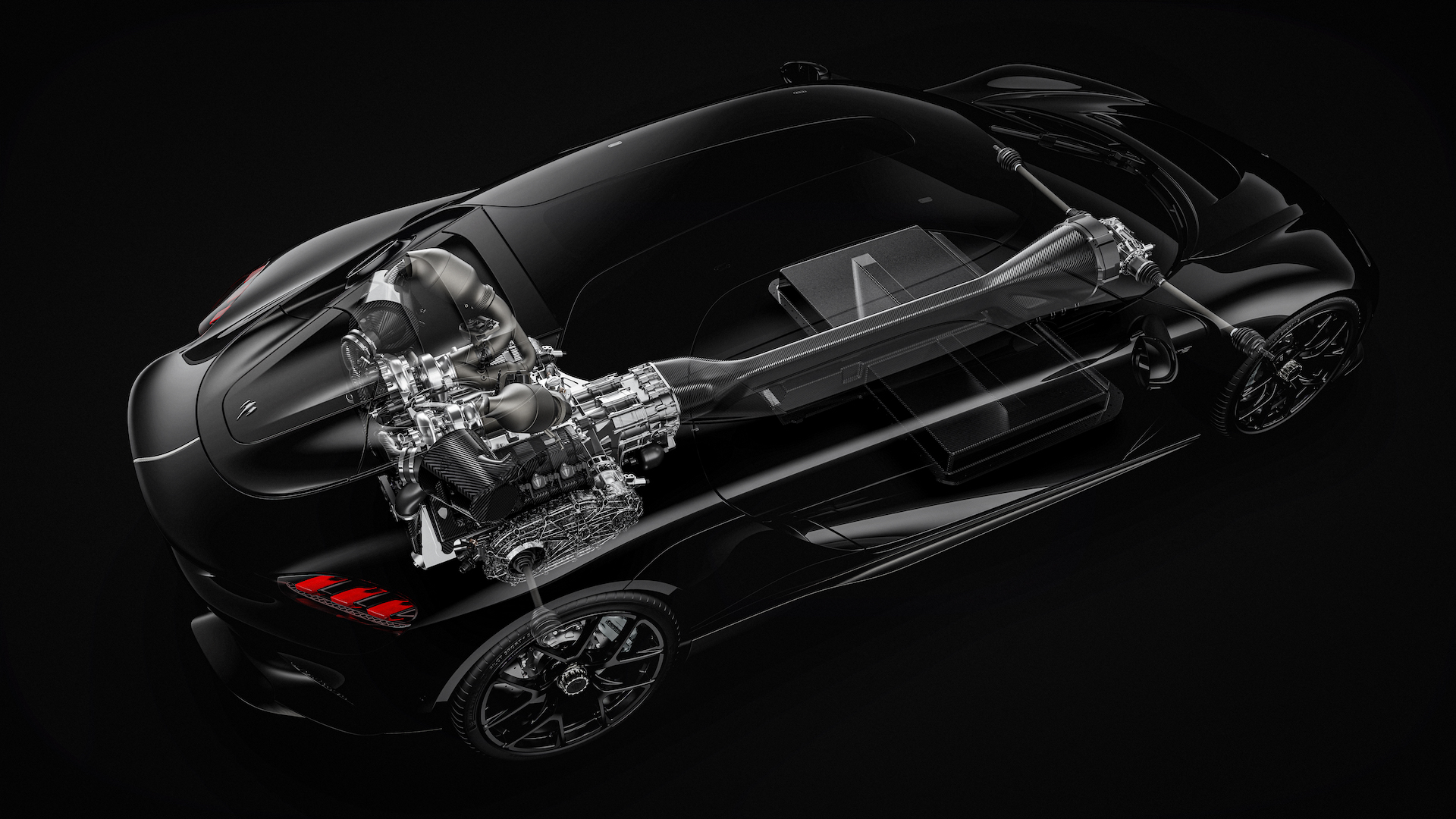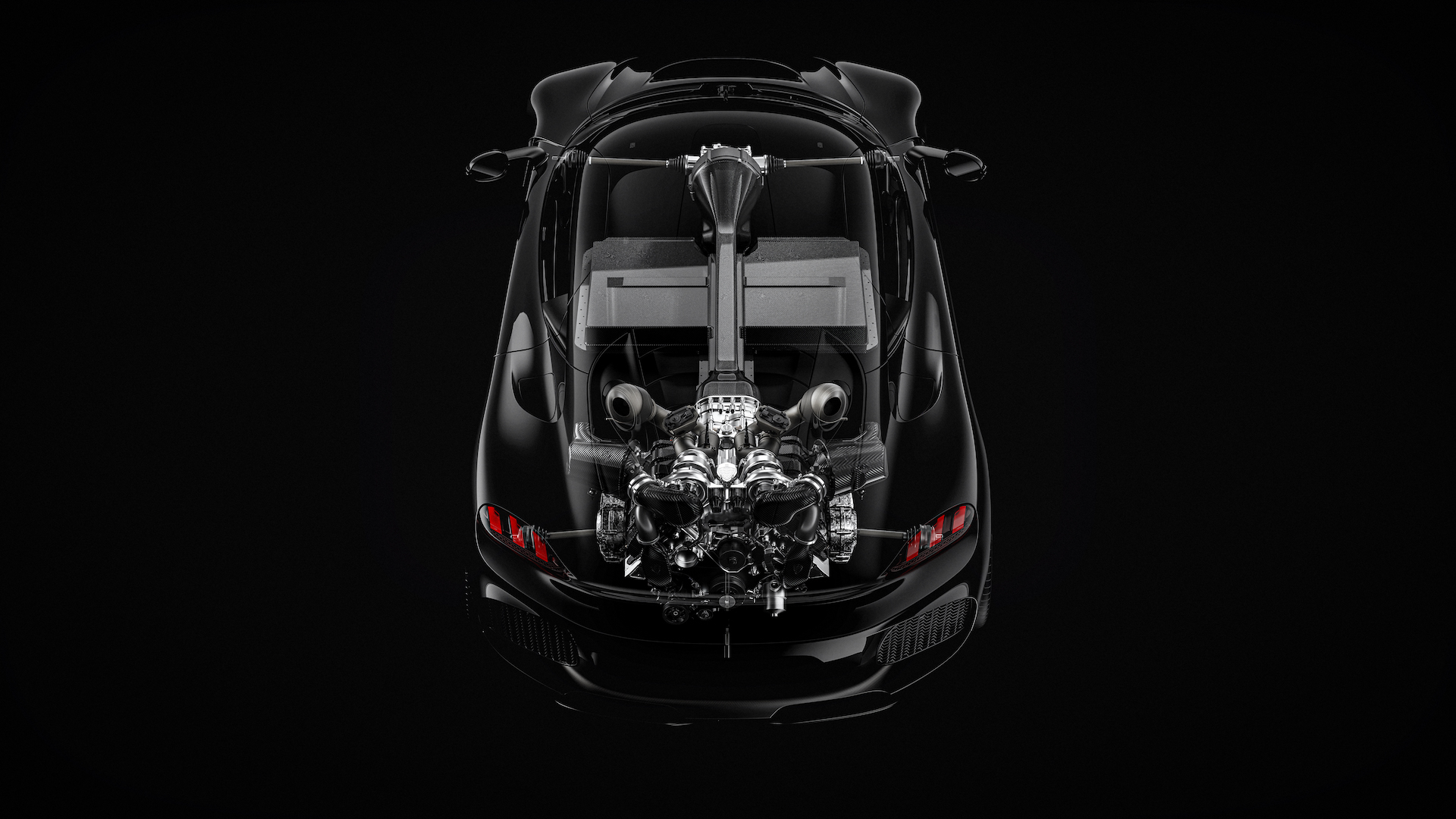Koenigsegg Gemera, the worlds first Mega-GT and Koenigsegg's First For Four
300 Gemera will be produced in total
Overview
The Gemera combines the exciting performance characteristics of a mid-engine two-seater megacar with the practicalities of a full four-seater car with more luggage space.
This ground-breaking combination means that the Koenigsegg megacar experience can now be shared with family and friends.
Equal Respect
For All
Pure Koenigsegg
As a Mega-GT and Koenigsegg’s first four-seater, the Gemera represents a revolutionary new vehicle category with an innovative automotive design to match. The Gemera's silhouette is long, sleek and minimal, while still keeping that iconic Koenigsegg aesthetic.
Space for four
The Gemera seats four tall adults comfortably with space catering to their carry-on luggage; there is space for four carry-on suitcases in the back.
The essence of the megacar is obvious in the exterior, but the fact that it’s a four-seater is a complete surprise when the doors swing open. This is the Koenigsegg megacar experience that can be shared with family and friends on a never-before-seen scale.
Creature comforts
As far as creature comforts are concerned, no shortcuts were taken. You get perfectly padded memory foam seats, eight cup holders - four heated and four cooled, entertainment screens with Apple CarPlay for both the front and rear passengers, and the ever-necessary induction and USB charging ports. The 11-speaker sound system is out of this world.
Dark Matter
Both powertrain options come paired with the revolutionary Koenigsegg Dark Matter e-motor - enhancing the total power output.
Gemera Specifications
- Technical Specifications
-
Powertrain
Gemera HV8Internal Combustion Engine
- Koenigsegg Hot V8
- 5L Twin Turbo V8
- Power: 1500 hp at 7800 rpm, red line 8500 rpm
- Torque: 1500 Nm at 5000 rpm
Transmission
- Light Speed Tourbillion Transmission (LSTT)
- 9-speed, multi-clutch gearbox
- 4-wheel drive
- 4-wheel torque vectoring
E-Motors
- Koenigsegg in-house designed Dark Matter E-motor
- Power: 800 hp
- Max torque: 1250 Nm
- Combined power output from E-motor and Hot v8: 2300 hp, 2750 Nm
Battery
- 850V 14 kWh HV battery pack
- Koenigsegg in-house designed and produced
Powertrain
Gemera TFGINTERNAL COMBUSTION ENGINE
- Koenigsegg Tiny Friendly Giant
- Twin Turbo 3-cylinder
- Power: 600 hp, 7500 rpm, red line 8500 rpm
- Torque: 600 Nm
TRANSMISSION
- Light Speed Tourbillion Transmission (LSTT)
- 9-speed, multi-clutch gearbox
- 4-wheel drive
- 4-wheel torque vectoring
E-MOTORS
- Koenigsegg in-house designed Dark Matter E-motor
- Power: 800 hp
- Max torque: 1250 Nm
- Combined power output from E-motor and TFG 3-cylinder: 1400 hp, 1850 Nm
BATTERY
- 850V 14 kWh HV battery pack
- Koenigsegg in-house designed and produced
Dark Matter
E-Motor SpecsPROPULSION
- Koenigsegg in-house designed Dark Matter E-motor
- 6-phase
- Power: 800 hp
- Max true: 1250 Nm
- Raxial Flux configuration, mix between radial and axial
- Max motor RPM 8500
DIMENSIONS
- Height: 383,3 mm Width: 381,5 mm Length: 135,5 mm
WEIGHT
- Weight: 39 kg
Body and Chassis
CHASSIS
- Carbon fiber monocoque – wheel to wheel stiffness
- Adjustable and lightweight anti-roll bars front and rear
- Robotized hydraulically adjustable ride height front and rear
- Koenigsegg safety cell with integrated crumple zones
BODY
- B-pillarless, two doors coupe with fully accessible four-seater interior
- Carbon fiber autoskin robotten panels
- Carbon sport bucket seats
Handling
STEERING
- Four wheel drive
- Four wheel torque vectoring
ASSISTED DRIVING
- Adaptive cruise control
- Lane assist
- Park assist
- Dead angle detection
- Self-parking
- Birds Eye view
ELECTRONIC STABILITY CONTROL
- Koenigsegg Electronic Stability Control (KES)
- Traction control settings
Wheels
WHEELS
- Koenigsegg fourth-generation Aircore carbon wheels
- Aluminium wheel options
- Tire pressure monitoring system
Comfort and features
FEATURES
- Luxury interior, with a high degree of customization (leather or Alcantara interior with custom contrast stitching)
- B-pillarless design for easy ingress and egress for front and rear passengers
- Four bucket seats, equally sized, heated and electrically adjustable
- Power to weight: 1.11 hp/kg
- Isofix
- 115L fuel tank
- Roof rack mounts
- Blind-spot detection
- Infotainment system
- Koenigsegg Over The Air (OTA) Cloud system
- 200L luggage space, fits 4 full-sized carry-ons
- Self parking capability
- Koenigsegg high-end audio with Apple CarPlay
- USB connections and 2 inductive phone chargers
- 4 heated and 4 cooled cup holders
- Car cover, Koenigsegg car charger
- Autoskin robotised panels (proximity protection system for automated door openings)
- ‘Bird’s eye’ view parking assistance, front and rear parking sensors, reversing camera
Mega Experience
Light Speed Transmission Gets a Power-Up
The LSTT (Light Speed Tourbillon Transmission four-wheel drive system with four-wheel torque vectoring can be powered by either the 800 hp Dark Matter E-motor or the twin-turbo TFG, or a combination of the two, resulting in a maximum output of 1400 hp and 1850 Nm.
The Germera Hot V8 Option
The Gemera HV8 elevates the Gemera beyond any Hypercar or Megacar and takes everything to the next level. It was previously thought to be impossible to fit a V8 into the Gemera - however, the layout of the LSTT made it possible.
Unparallelled Power
With the HV8 configuration, the Gemera boasts an astounding 1500 hp from the HV8 in addition to the 800 hp provided by the Dark Matter E-motor, resulting in a total of 2,300 hp and 2,750 Nm of torque – a new world record for a production car.
The most amazing sound from a 3-cylinder engine ever
The Gemera has a custom designed, tuned titanium exhaust system developed in conjunction with exhaust specialists and partners, Akrapovic. It leaves a massive impression on looks and sound.
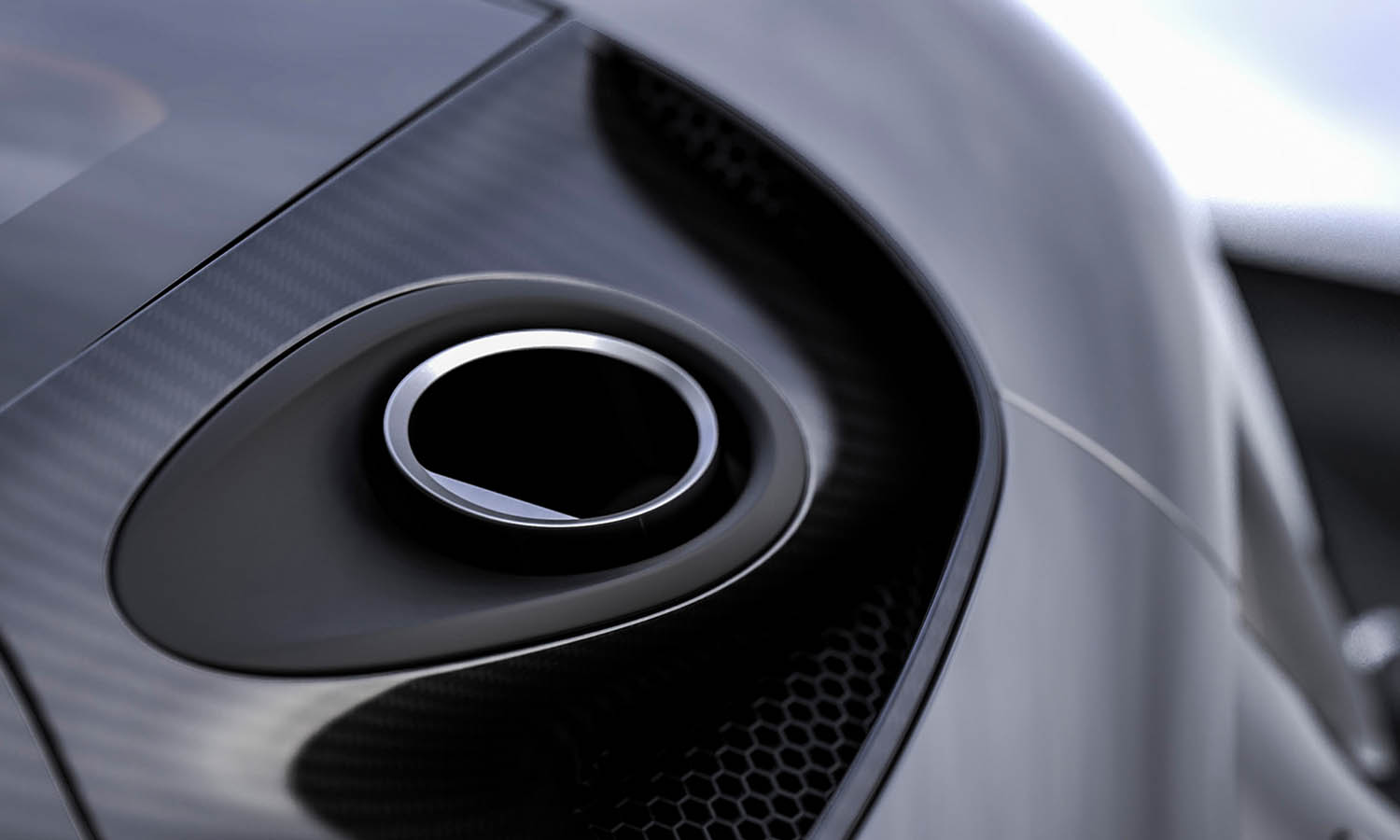
Optimal Comfort
Comfortable seating for all - a unique megacar experience that is as enjoyable and roomy for the passengers in the front seat, as well as the back seat.



